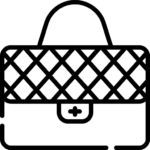KNOW YOUR LEATHER
Leather is such a fascinating material. Every pore and scratch tells a story of the animal’s life. Since the dawn of time, mankind has been using leather for a variety of applications but one of the most common ones is shoemaking. In fact, different animals produce leathers with different qualities. This means there many types of shoe leather and it can get rather confusing and unclear for most of us.
You are lucky though. In this article you will find information about the most common “Types of Shoe Leather” along with some more exotic ones. As usual, it will be rather large! Get some coffee, use the table of contents to navigate and get ready to explore the amazing world of leatherworking.
Table of Contents show
WHY SHOULD YOU CARE?
Apart from the construction of a shoe, the other most important aspect is the choice and quality of leather. Leather is essentially a hide sourced from different animals and has various characteristics. Each leather undergoes many steps to produce the end result. Some of them are perfect for rougher use and scuff resistant while others more delicate and for more formal occasions. Likewise, soft leathers like Suede don’t like water, but instead make for an excellent casual or summer shoe.
If you have at least a general understanding of the characteristics of most types of shoe leather, you will be able to make better and more accurate choices in the future. Not only that, you will learn a thing or two along the way!
THE OLDEST SHOE IN THE WORLD
Did you know that the oldest shoe in the world is 5500 years old? Thousands of years ago, humans began using leather as a means to protect themselves from the natural elements. Our feet and hands help us keep a balanced temperature, but also lose heat first. It was imperative to cover those areas.
It was discovered back in 2010 during an excavation in Armenia and would be the equivalent of a woman’s US 7 in today’s sizes. A very primitive version of a wholecut from one single cowhide piece of leather and leather cords for laces. For more information check out National Geographic’s article on the subject.
Since then, shoes have definitely evolved and newer styles are considered classic these days. Just look at Chelsea Boots and Monk Straps for example. They all share one common characteristic however: the core style remains largely the same. There is not much evolution from a 100 year old Oxford shoe and today’s versions. In my opinion at least!
However, in this age of consumerism and fast fashion quality in mainstream shoes has waned a lot. This is why we try to educate people to invest in quality shoes that will last long and look great after many years.
Tip: This is about leather shoes, as some sandals are dated to be more than 7000 years old.
GRADES OF LEATHER
As with most things in life leather has variations, or “grades”. The area that the leather comes from has also a big impact on quality, but that is a discussion for another time. Generally, the best leather comes from parts of the animal that are not exposed to damage so often. Typically, this includes the back while the worst parts come from the head and legs or belly. Stretch marks and imperfections are not the best right?

For now, here is a quick overview of the most common grades of leather so nobody can fool you anymore.
Disclaimer: You might notice that Suede is missing from this list, but that is because it deserves its own section later.
FULL GRAIN LEATHER
Full Grain Leather is the best quality leather sitting at the top of the chain. It refers to the outside part of the animal’s hide just below the hair. The term “Full” means that it has not been buffed or sanded, which is a process that is used to remove imperfections or marks. The tight porous nature of the leather prevents moisture retention but it also means that it is thicker.
Thickness aside, only few parts of an animal hide are suitable for full grain leather which makes it more expensive and harder for leatherworkers to process. Nonetheless, full grain leather is a strong material that will develop a wonderful patina as it ages and last for years with proper care.
TOP GRAIN LEATHER
Essentially, Top Grain Leather is like full grain but with a twist. It undergoes light sanding to shave off a few millimeters from the top, removing any imperfections.
This means that while it retains the general characteristics of full grain, it is thinner, less durable and more uniform. You could say that it is a more downgrade version that lacks the “Character” of the former. It does have a smooth finish and can take a stain better but is worse for breathability and patina.
The main problem with Top Grain is durability. Since it is thinner, it is not the optimal material for bags and shoes. These are items that you want to last right?
CORRECTED GRAIN/GENUINE LEATHER
These days, everybody brands leather as “Genuine” and tries to pass it as high quality leather. In fact, it is the left-overs after using the top layers for better types of leather. The definition is quite unclear and it serves as a buzzword for uninformed consumers. Any type of hide from different animals can produce a leather item and be advertised as “Genuine“. This makes it increasingly confusing since Full Grain Leather is also Genuine. But then again, they wouldn’t need to advertise that.
To add to the insult, it goes through sanding and layers of artificial grain. This gives it a false natural look through spraying with stain and dyes. It is cheap to make and is your run of the mill, typical shoe in your local affordable shop.
Avoid.
BONDED LEATHER
If corrected grain is scraping the bottom of the barrel, bonded leather is the ungodly residue that remains UNDER that. It is not even leather, it is a byproduct. Just leftovers and scraps. Shred them, put them on a fiber sheet and spray tons of adhesives and polyurethane and voila. You have an unstable concoction of horrendous quality that will last as much as a cheddar slice in the sun. Oh, it also smells like the food they gave us in the army.
A mixture of leather and (mostly) plastic, bonded leather is unholy grail of the leather world.








